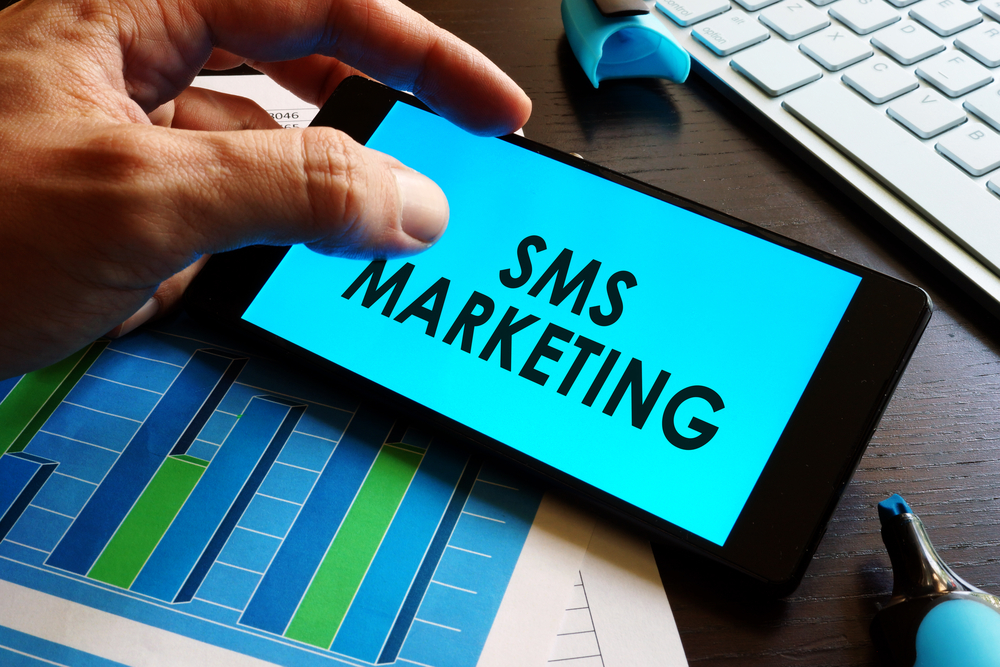



SMS marketing is a type of mobile marketing that uses text messaging as a means of contacting customers. Marketing for PT businesses and fitness firms can be done by sending text messages to many people, providing a very effective way of targeting a varied audience.
We’ll examine the advantages of SMS marketing and its potential to enhance the growth of your fitness center.
Text message marketing is particularly well-suited to fitness centers as it helps boost sales and gym memberships. Let’s explore more benefits of SMS marketing for fitness centers.

We forge outstanding Health, Fitness & Nutrition professionals. Whether you’ve always dreamed of becoming a Personal Trainer, a Pilates or Fitness Trainer, or a Nutrition Coach, we help you transform your passion into your career as the UK’s most trusted provider of health, well-being and fitness courses.
SMS marketing is an effective technique for fitness facilities trying to increase sales and memberships. SMS has a stunning 90% open rate within the first three minutes, which is much greater than other kinds of digital marketing.
The personal and direct quality of text messages, along with the fact that people usually have their mobiles with them, makes reading and responding to text messages easy and convenient.
Because text messages are brief and to the point, making them simple to read and comprehend, SMS marketing is quick and effective.
Fitness facilities need to be able to communicate like this because they frequently have important information to share, like class schedules, membership specials, and upcoming events. Businesses can ensure that their messages are getting to potential customers quickly and effectively by using SMS.
SMS marketing is a budget-friendly, high-impact method for fitness facilities to increase sales and gym memberships. It can be tailored to certain groups of individuals, such as those who live in a specific location or have demonstrated an interest in fitness.
A fitness establishment can tailor messages to members who haven’t attended the gym in a while versus those who visit regularly, meaning they aren’t broadcasting the same message to everyone.
If you’re trying to raise money for your business and are on a budget for your marketing expenditure, a low-cost strategy like SMS marketing could be ideal.
When starting SMS marketing for your fitness center, it’s important to set a budget. This will help you plan and execute your campaigns effectively. Factors to consider when determining your budget include the cost of SMS services, the number of messages you’ll send, and the targeted audience.
Research different SMS marketing solutions to find the most cost-effective option. Remember that SMS marketing is relatively low-cost compared to other forms of marketing, so a smaller budget can still be effective.
Start small and adjust your budget as you see the results. Additionally, set aside some funds for testing and analyzing the performance of your campaigns to optimize and improve them over time.
This crucial step can be done in a variety of ways, such as through website sign-ups or in person at the gym. It’s important to follow all relevant laws and regulations, like GDPR or CCPA, obtain customers’ consent to receive text messages, and be transparent about how you’ll use their information.
To gather online sign-ups, create a form and advertise it on your website or social media channels. Customers can sign up in person by using a tablet or a sign-up sheet.
For your messages to reach the intended recipients and your campaigns to be successful, ensure that the contact information collected is accurate.
Remember, the number caller ID used in the marketing campaign should be that of the gym to help boost trust.
SMS campaigns must be written in an appropriate message and tone if they’re to be successful. The writing must be understandable, succinct, and appropriate for the intended audience.
When crafting the message, it’s important to consider not only the campaign’s goals but also the advertising and marketing strategies that will be employed. This will ensure that the message is tailored to the intended audience and effectively promotes the campaign’s objectives.
For instance, if the SMS is intended to advertise a new membership package, it should highlight the advantages and exclusive discount. The style should be educational rather than promotional if the goal of the campaign is to remind audience members of an upcoming event.
The tone of the message should be consistent with the brand and appropriate for the target audience. A casual and friendly tone may work well for young adults, while a formal and professional tone may be more appropriate for older adults.
The timing of your messages can greatly impact the effectiveness of the SMS marketing campaign. Sending messages at the wrong time may result in them being ignored or overlooked.
When deciding on the timing, consider the purpose of the campaign and the target audience and their behaviour. For example, messages promoting a new membership package may be more effective on a Monday, while reminders of an upcoming event may be more effective close to the event.
Consider the recipient’s time zone when scheduling messages to ensure they receive them at an appropriate time. Nailing the timing is crucial for your text and voice marketing to maximize the effectiveness of the campaign and reach customers at the right time.
A CTA (call to action) is an essential component of SMS marketing as it encourages customers to take a specific action, like signing up for a membership.
A CTA can be a simple instruction like ‘Sign up now’ or a link to a landing page for the customer to follow. The key is to make the CTA relevant, clear, and easy to follow. Include it in a prominent location within the message.
For example, if the message is promoting a new membership package, the CTA should be a link to sign up for the package. Trialling different CTAs through A/B testing and measuring the results can help determine which CTAs are most effective.
Before starting your marketing campaign, conducting a SWOT analysis is important to identify business strengths, weaknesses, opportunities, and threats. By understanding your market positioning, you can devise informed strategies about how to target your desired audience and what types of promotions to offer. Here are a few strategy examples:
A sign-up campaign is great for increasing sales and attracting new members. The advertisement might highlight special incentives or discounts for new gym members.
This might be achieved by offering a membership discount, a free trial, or a package that includes extra services or benefits. For example, if your fitness center is based in the UK, a toll-free number for the UK could persuade new clients to get in touch.
SMS marketing is ideal for offers because the promotion or discount can be clearly communicated in a text. It can include a CTA that directs customers to a landing page where they can learn more about the promotion and sign up for a gym membership.
Free-to-use image sourced from Pixabay
A member engagement campaign is a great way for fitness centers to keep existing customers engaged and encourage them to continue using the gym. This can be done by regularly sending messages to existing members to keep them informed about new classes, events, promotions, and other activities that are happening.
A few examples include sending weekly or monthly newsletters via SMS, sending personalized messages to remind members of upcoming classes or personal training sessions, or creating a loyalty program for existing members.
It’s beneficial to keep the message friendly and conversational, encouraging members to reply and provide feedback to improve the overall gym experience.
A renewal campaign is a great way to get current gym clients to renew their subscriptions. This may be achieved by sending SMS reminders and appealing offers to current members before their subscription expires.
The campaign can include a reduction in the renewal charge, an upgrade to a more premium membership plan, or a free personal training session.
Another approach would be to provide a loyalty program for existing members who renew, with perks like reduced personal training sessions, discounted guest tickets, or access to special courses.
The tone of the message should be welcoming and conversational, with a clear and easy-to-follow CTA that takes members to a landing page to renew their membership. An IVR phone system can help answer customers automatically when they decide to call the gym to renew their membership.
A general information campaign is a way for fitness centers to keep customers informed about the gym and upcoming events by sending general information via SMS.
This can include newsletters with information about the gym’s operating hours, new classes and events, and any changes to the gym’s services or policies. Also, notifications about upcoming events can be sent to keep customers interested in what the gym has to offer.
Additionally, sending out surveys or polls to gather feedback and ideas from customers can help make improvements to the gym. Keep the tone of the message friendly and conversational, encouraging customers to reply and provide feedback or ask any questions.
Free-to-use image sourced from Pexels
SMS marketing is an effective and low-cost way for fitness centers to boost sales and gain new members. By utilizing campaigns, like new customer sign-up and general information campaigns, fitness centers can effectively reach and engage their target audience.
It’s also important to consider budget, timing, message tone, and CTAs in SMS marketing efforts. Other marketing strategies, like telemarketing, can be a beneficial addition to an SMS campaign.
By following these steps, fitness businesses can increase their reach and drive conversions through SMS marketing.
Author
Grace Lau – Director of Growth Content, Dialpad
Grace Lau is the Director of Growth Content at Dialpad, an AI-powered cloud communication platform for better and easier team collaboration using Dialpad’s call log history. She has over 10 years of experience in content writing and strategy. Currently, she is responsible for leading branded and editorial content strategies, partnering with SEO and Ops teams to build and nurture content. Here is her LinkedIn.